Extreme? Risky? Daring?
All these terms have been bandied about to describe sports in the 20th and 21st centuries.
Windsurfing is among the sports, both on land and in the water, that one considers “extreme.”
Delving into this label for the sport of windsurfing, we want to know if it is truly extreme as defined by the sports world and dictionary. We know it is fun, whether extreme or not.
- Extreme Sports: A Definition
- Examples of Extreme Sports
- Windsurfing Can Be an Extreme Sport
- Windsurfing In Gentle Breezes
- Flying With the Wind
- Racing Takes It Higher
- Location Determines Risks
- Safety Reduces the Risk
- Conclusion
- You Might Also Like…
Disclosure: this post contains affiliate links (clearly marked with ), which means we may earn a commission if you buy something through them, at no additional cost to you.
Extreme Sports: A Definition
One defining element is the “extreme” part, which means “of, relating to, or being an outdoor activity or a form of a sport that involves an unusually high degree of physical risk.”
While there is no global, undisputed definition, most commonly, “extreme sport” is defined by defining its two components.
In other words, in order for an activity to qualify as an “extreme sport”, it has to fulfill both requirements:
- sport: it has to be a sport, meaning it requires substantial skill or physical ability to allow proper execution of the activity.
- extreme: lacking the aforementioned required skills or abilities, the resulting poor execution of the activity poses a serious risk of injury.
Many people consider “extreme” activities like Bungee Jumping an extreme sport. But by keeping the above definition in mind, you can easily see that Bungee Jumping is actually not an extreme sport.
Why? For the simple reason that – while certainly being thrilling and adrenaline-pumping – Bungee Jumping but does not require learned skills. Also, this lack of required skills does not result in a serious risk of injury to the participant.
Compare this to base jumping, for example, and you can easily see why one is an extreme sport while the other isn’t.
Similarly, jet boating is not an extreme sport for the passengers (but may be for the pilot or the wakeboarder behind the boat).
Origins of Extreme Sports
In 1995, the first X Games were held in Rhode Island. The Extreme Sports Channel, launched in Europe in 1999, began bringing the excitement of more radical sports before the eyes of the public.
Adrenaline-thumping action was felt by the audience as well as participants. New tips and tricks were soon seen in such sports as skateboarding, freestyle motocross and snowmobiling.
Some say that Generation Y, born in the 1980s and 1990s, or the Millennials, have made extreme sports popular by a show of defiantly thumbing their nose at the conventional.
Doing things that are “cool” as well as risky are part of the profile of this generation as well as Generation X, who broke with tradition.
Formerly teamwork, cooperation, and authority were usual aspects of sports, but the new extreme sports marked a change, as solitary activity and risk became more normalized.
Thrills ‘R Us
The mental and physical challenges, as well as uncontrollable variables, such as natural phenomena (wind, snow, wave height, etc.) all affect the outcomes and add excitement to the sport.
Some participants of extreme sports find this excitement pleasurable; according to the psychiatrist Sigmund Freud, we have a “death wish” as part of the subconscious, making thrills and danger enjoyable.
Those who participate say that extreme sports brings a greater perspective and recognition of life itself.
Check out one of the best wave windsurfers riding the biggest and most dangerous waves on earth:
Examples of Extreme Sports
What are some sports that are considered extreme?
Considered to have a high-risk factor, these sports might involve height, specialized gear, and possibly speed as well as a high level of hard work and the considerable skill required.
Another characteristic is that stunts may be involved. Here are a few of the sports considered extreme:
- BASE jumping
- BMX
- Boxing
- Climbing
- Cave diving
- Canyoning
- Bodyboarding
- Zorbing
- Parkour
Among the extreme sports that are more involved with gliding and are non-motorized are the following:
- Surfing
- Windsurfing
- Kiteboarding
- Extreme skiing
- Snowboarding
- Parachuting
- Wingsuit
What do all these sports have in common?
You can see that they all fit the definition we’ve outlined above, meaning they require considerable skill and not executing them properly can lead to serious injury.
Windsurfing Can Be an Extreme Sport
With windsurfing included in this list, it appears that it rates as extreme, although perhaps, not in the same league as Volcano Boarding.
With windsurfing listed up with parachuting, you might want to know more about why it is considered extreme.
There are many levels at which to engage in this sport, some of which are more extreme than others, requiring more skills and expertise and higher risks involved.
Windsurfing In Gentle Breezes
Many people learn this sport in calmer waters; the majority of all windsurfers are not jumping or crashing through waves.
Enjoying the calm feeling felt through the connection of wind and water is part of the appeal of windsurfing, especially when done in gentle breezes and calm waters.
Beginners as well as those who want to ride gently might seek out low winds and more placid waters.
Falling off the board becomes less common over time, and those who do fall off learn how to avoid injury. The danger however, is always there if the wind changes direction or you are too far from shore when the wind dies and do not know how to self-rescue.
Those who are not in shape quickly get more muscles as they get better. Stamina improves little by little.
Although windsurfing provides an aerobic workout at this level, it is not as extreme as more advanced boardsailing; this environmentally-friendly sport is not dangerous for you, most of the time.
You might get catapulted into the water, or encounter a sprain or cut, but that’s not the level of “risk of serious injuries” which typically defines extreme sports.
Learning safety in windsurfing plays a large part in keeping risk and danger to a minimum for most people.
The more extreme the conditions, the more of an extreme sport windsurfing becomes.
Flying With the Wind
Once you have mastered the basics, you might be moving on to windsurfing that is more extreme. Advanced windsurfers may do the following:
- Freestyle, including flatwater jumps, radical jibes, spins, transitions and aerial maneuvers
- Speed sailing
- Wave sailing
- Waterstarts
- Racing
- Foil windsurfing
At this point, maneuvers become more extreme, as conditions may be more hazardous, and wind may be higher and water choppier, increasing the danger factor and the required skills.
In 2007, the average windsurfer was 37 years old, with almost half being women. At that point, lake sailing was more popular and may still be today.
However, racing and competitions have taken over the most extreme areas of the sport.
Racing Takes It Higher
Racing and aerial maneuvers are part of the racing scene. US Windsurfing and the PWA sponsor numerous events that include the fastest and most nimble of the sport.
These might include such races as the Gorge Cup, set in Hood River, Oregon on the Columbia River. While on the river, racers might encounter a barge as well as high winds and choppy water.
San Francisco Bay hosts the St. Francis Yacht Club Slalom Series, a race that does not feature acrobatics but takes place on the windswept choppy waters of the Bay, with its currents and assortment of boats. There might be waves as well as chop, making sailing somewhat more radical.
The Professional Windsurfers Association (PWA) hosts races and events throughout the world, some very extreme.
Jumping high in the air in conditions of wind and waves, bring the best windsurfers out to compete in sites such as Gran Canaria. Often sailing in the windiest of conditions, extensive skill is a requirement here.
The Fuerteventura PWA Grand Slam is held within the Canary Islands, Spain and includes freestyle, as challenge with tricks in wind and waves.
Freestyle racing includes a timed event, where racers execute their best maneuvers during the time allotted.
Denmark, with its colder waters and considerable shorebreak, hosts the Cold Hawaii, which definitely qualifies as an extreme sport as well.
Location Determines Risks
With a range of locations at which to windsurf, sailors can choose less extreme conditions for practice and improving their skills. If they wish to learn to sail in waves, that is available as well.
Gentle Flatwater Sailing
Flatwater windsurfing can include bays, lakes, ponds, and lagoons. Bonaire in the Antilles Islands is one popular spot and is a favorite for Caribbean sailing.
Lac Bay is a popular flat water site that attracts those who want to experience flat water at other sites in addition to their local lake back home.
Flatwater sailing also offers a chance for experienced sailors to practice new maneuvers or to test their speed skills, as days with higher winds may occur.
Generally though, flatwater windsurfing is not considered an extreme sport (unless the winds are very strong).
Extreme Windsurfing in Waves
On the more radical end of windsurfing, waves offer a chance to face mother nature.
Those who live near the ocean, such as in Hawaii, get to regularly practice this exciting aspect of the sport.
Ocean swell provides the challenge of getting through the shore break as well as windsurfing in waves and then getting back to the beach.
Everyone who has ever been “washed” by even a fairly small wave knows the immense force inherent in water and especially in a breaking wave.
So you can easily understand that getting washed and possibly held under water by a wave that’s higher than your windsurfing mast is absolutely dangerous.
As a result, windsurfing in waves is definitely an extreme activity.
There’s a reason why there are helicopters, several jet skis and other rescue and safety measures in place during big wave sailing events (which only the very best athletes participate in).
Robbie Naish – one of the best windsurfers in history – is known for crashing through Hawaii’s biggest waves and represents the best in extreme windsurfing:
Safety Reduces the Risk
Extreme sports can be dangerous, and depending on how and where you choose to windsurf, it may fall into this category.
Knowing the risks and learning about safety are part of learning to windsurf as well as doing it at its most extreme.
US Windsurfing has a list of safety procedures, to lessen the danger, that can be followed from the first day on the water. These include:
- Stay with the board- never leave it and try to swim to shore
- Wear a USCG life vest
- Sail with a buddy
- Do not sail in offshore winds
- Tell friends onshore your sailing plans
- Check the weather before going out
- Wear proper clothing or wetsuit
- Know signs of hypothermia and heat exhaustion
- Check equipment before going out
A loose fin might become looser and come partially out, making it difficult to get back to shore.
A small tear in the sail can become much worse, as it is battered by the wind. These heighten the risk and danger, even when you are sailing in flat water on a bay or lake.
Conclusion
Is windsurfing an extreme sport? It can be. It does exceed the ordinary, usual, or expected and at times, especially in waves, can be radical.
There are risks involved which may make the sport dangerous if important safety procedures are not followed.
However, most beginning and intermediate windsurfing is neither extreme nor particularly dangerous. Beginners, with an experienced teacher, learn in gentle winds, sometimes in no wind at all.
Gliding over the water presents little risk to the newbie windsurfer. As speed increases, the risk does as well, and intermediates, after taking lesson in jibing, harness use, water starts and footstraps may begin exploring speed and the more extreme aspects of the sport.
In short: windsurfing has the potential to be an extreme sport, but it’s up to you whether you choose to delve into the extreme aspects of it or whether you prefer the more gentle, non-extreme sides of it.
They are far less dangerous and yet offer plenty of thrills, adrenaline and fun!
You Might Also Like…
-
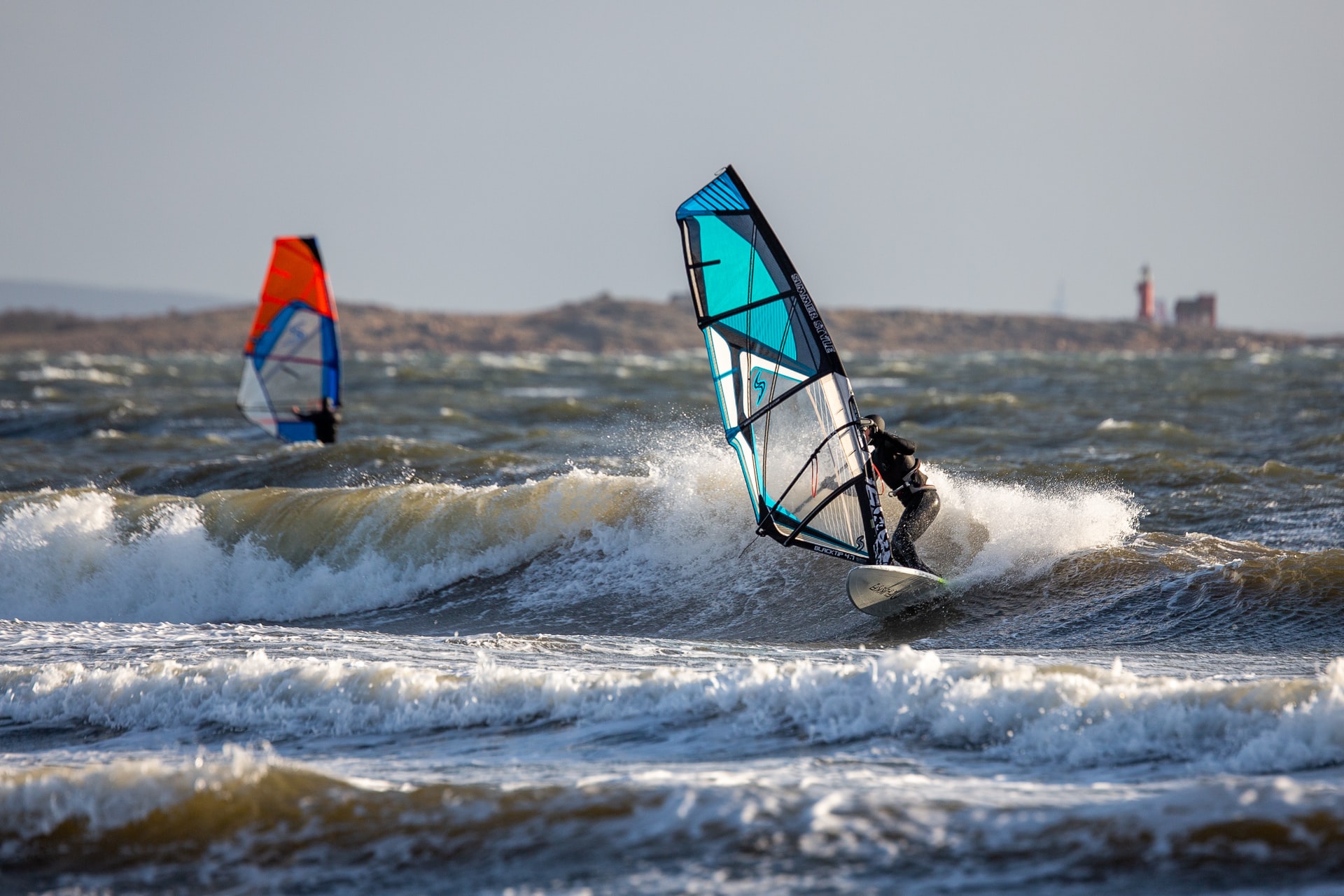
Surfing vs. Windsurfing: 8 Major Differences (& 4 Similarities)
-
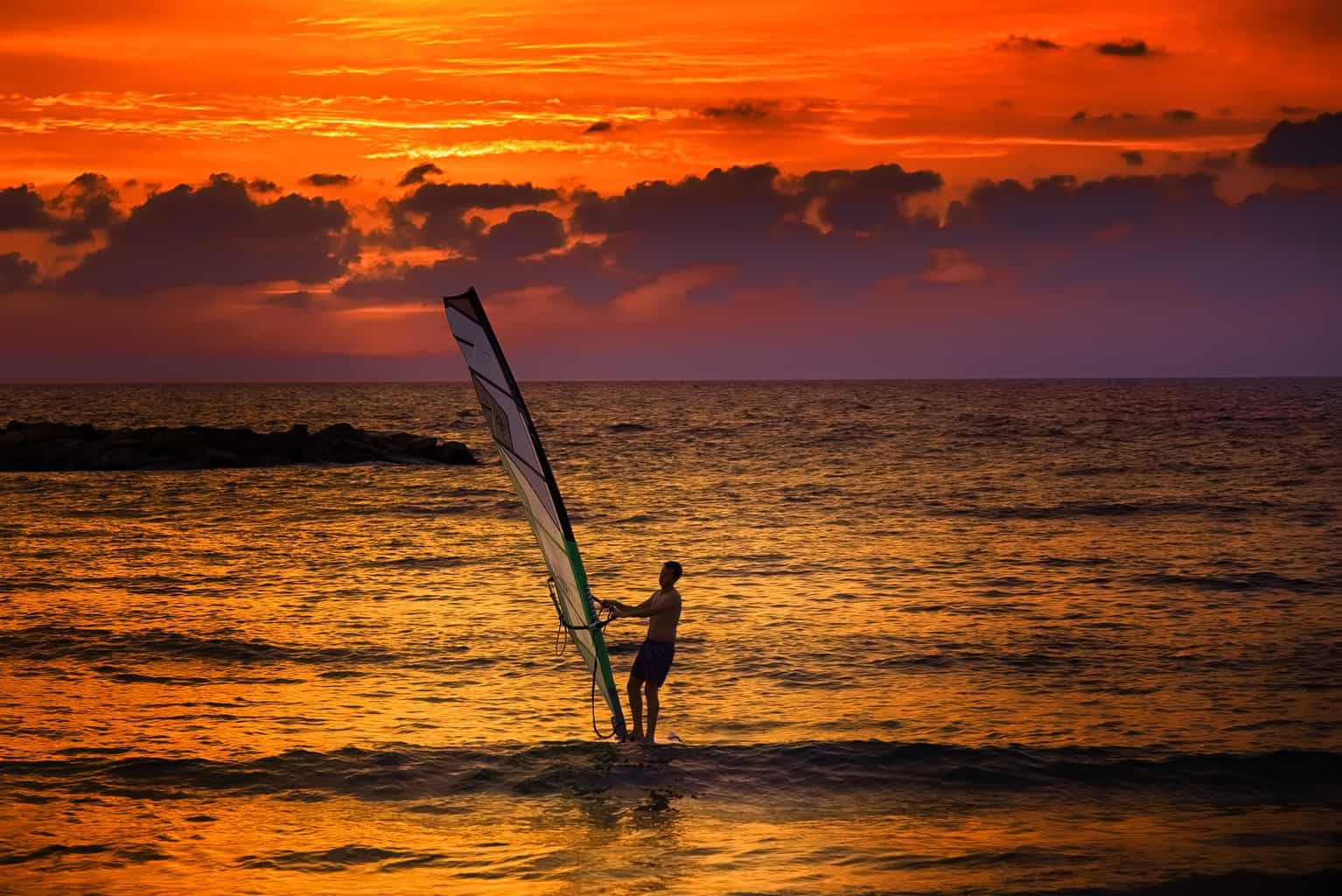
How Does Windsurfing Affect the Environment? (+8 Practical Tips)
-
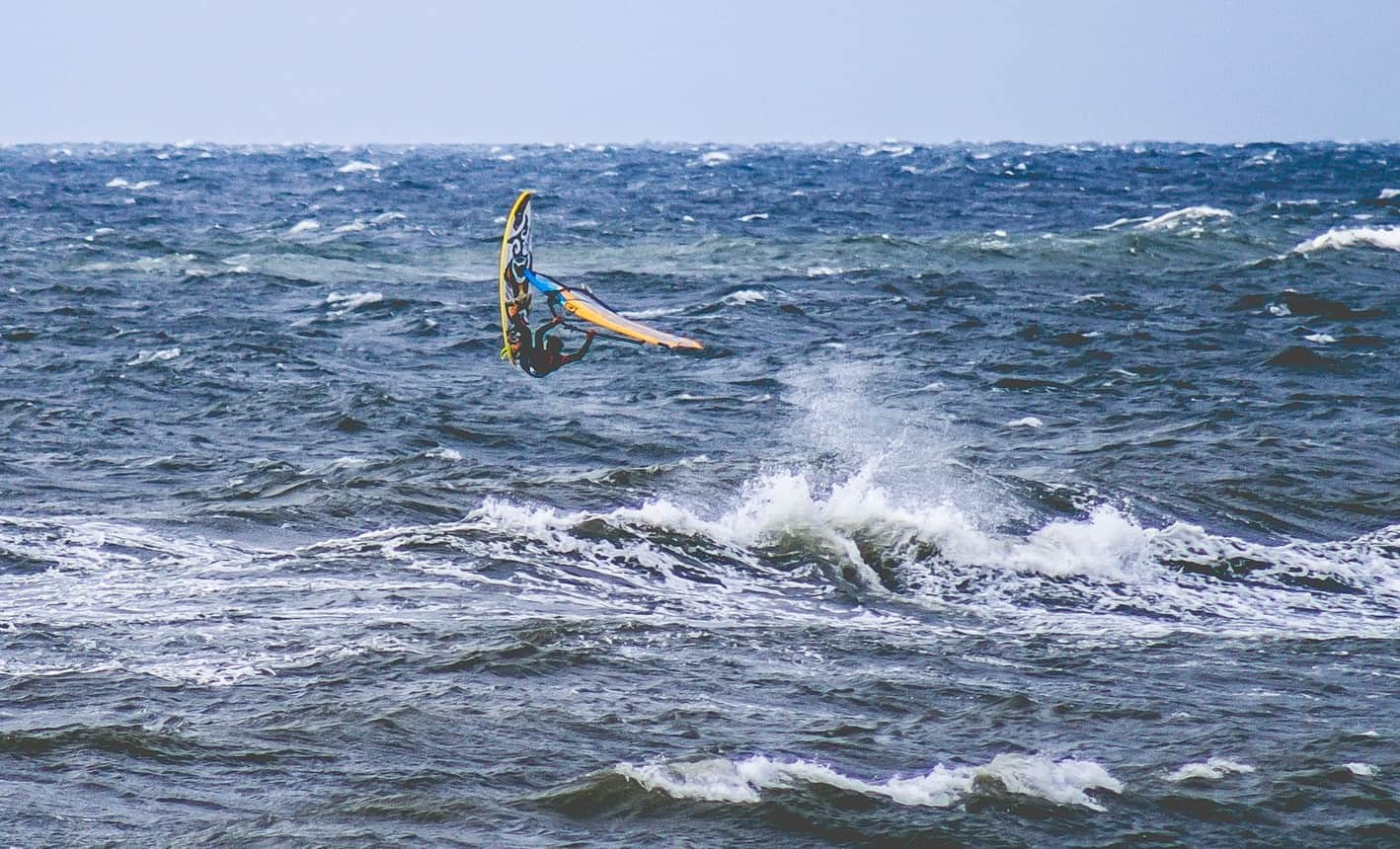
Is Windsurfing Dangerous? 14 Risks (& How to Avoid Them)
-
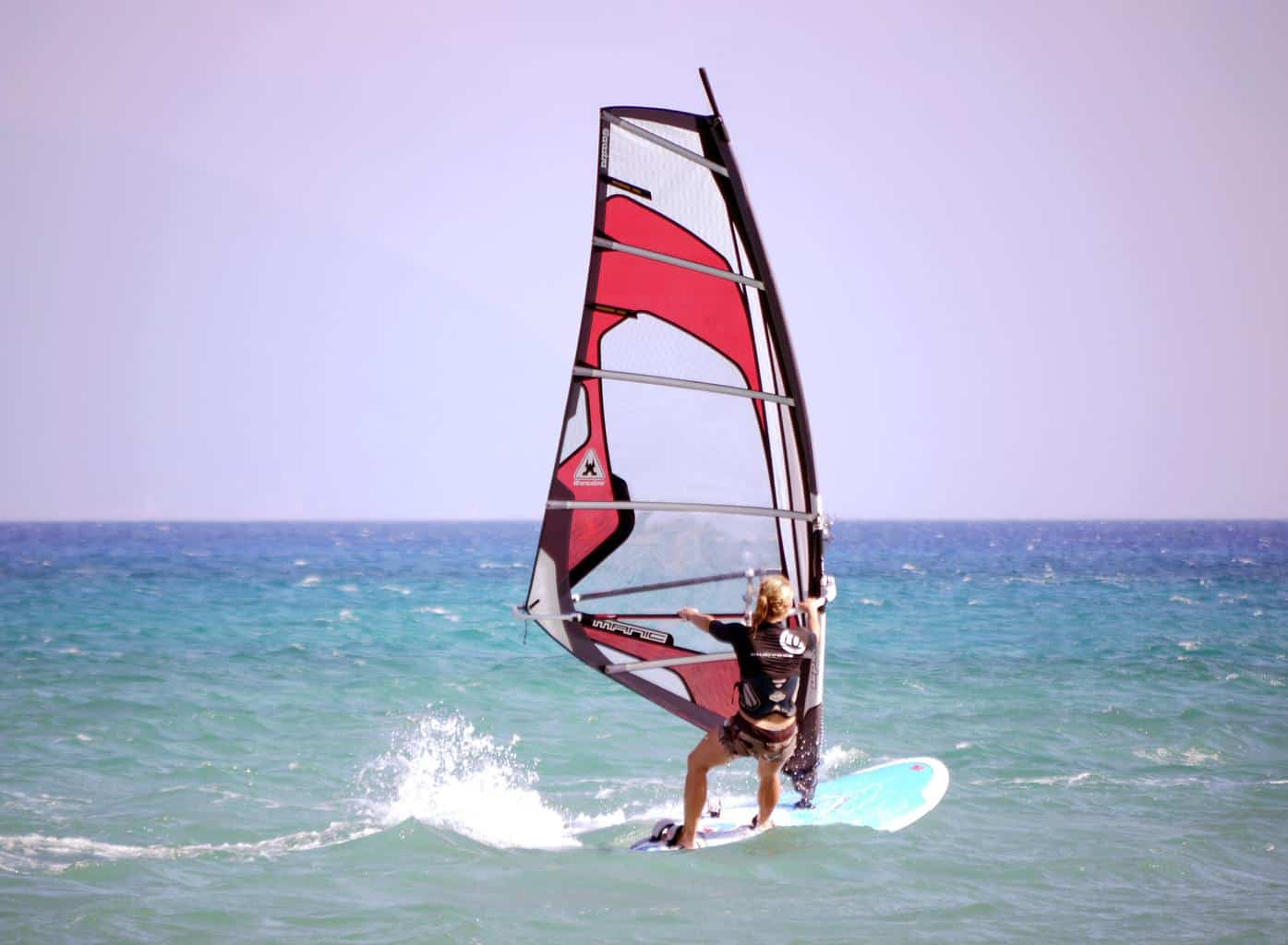
Windsurfing – 7 Common Beginner Questions (Answered)
-
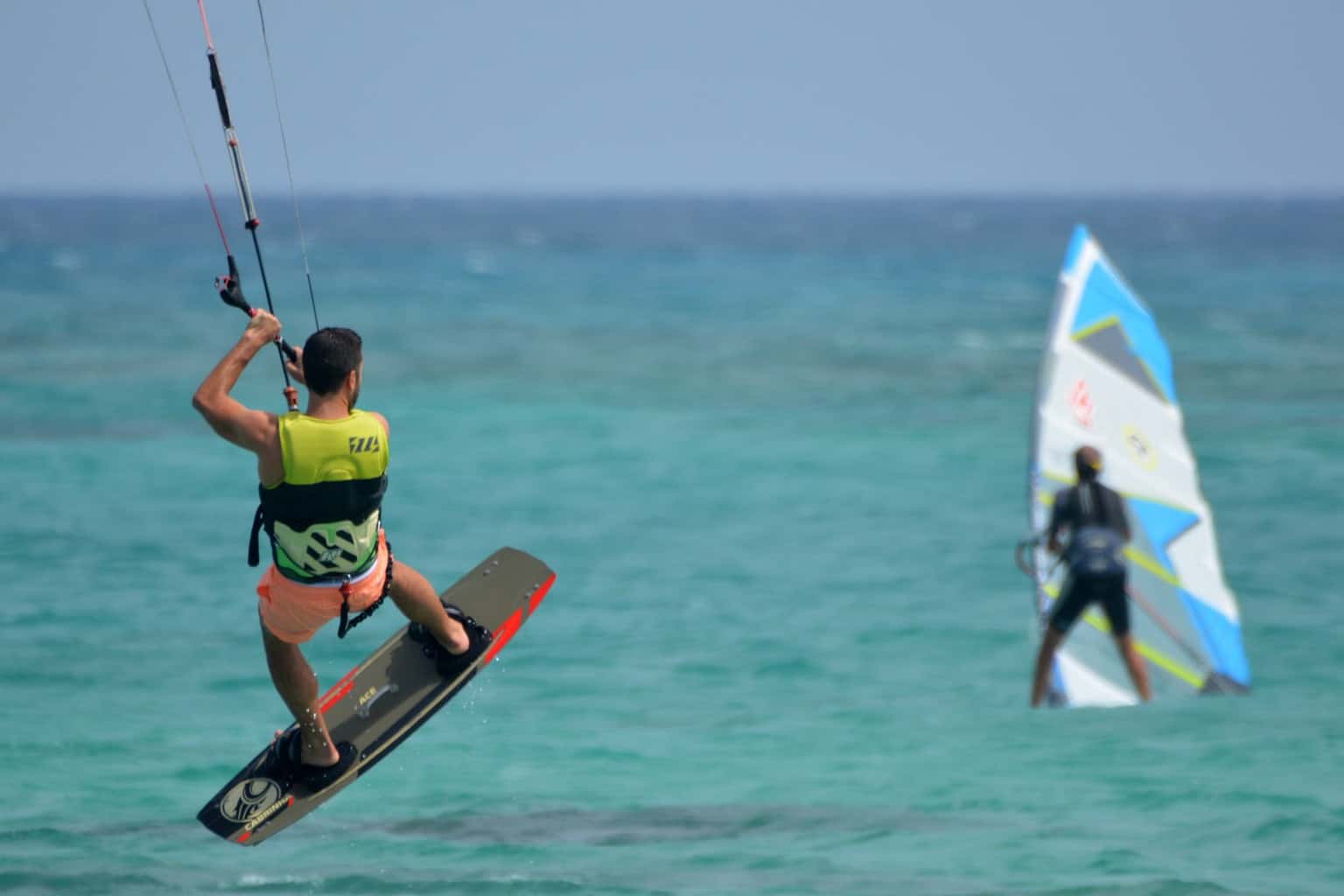
Is Windsurfing Faster Than Kitesurfing? (An Honest Look at the Facts)
-
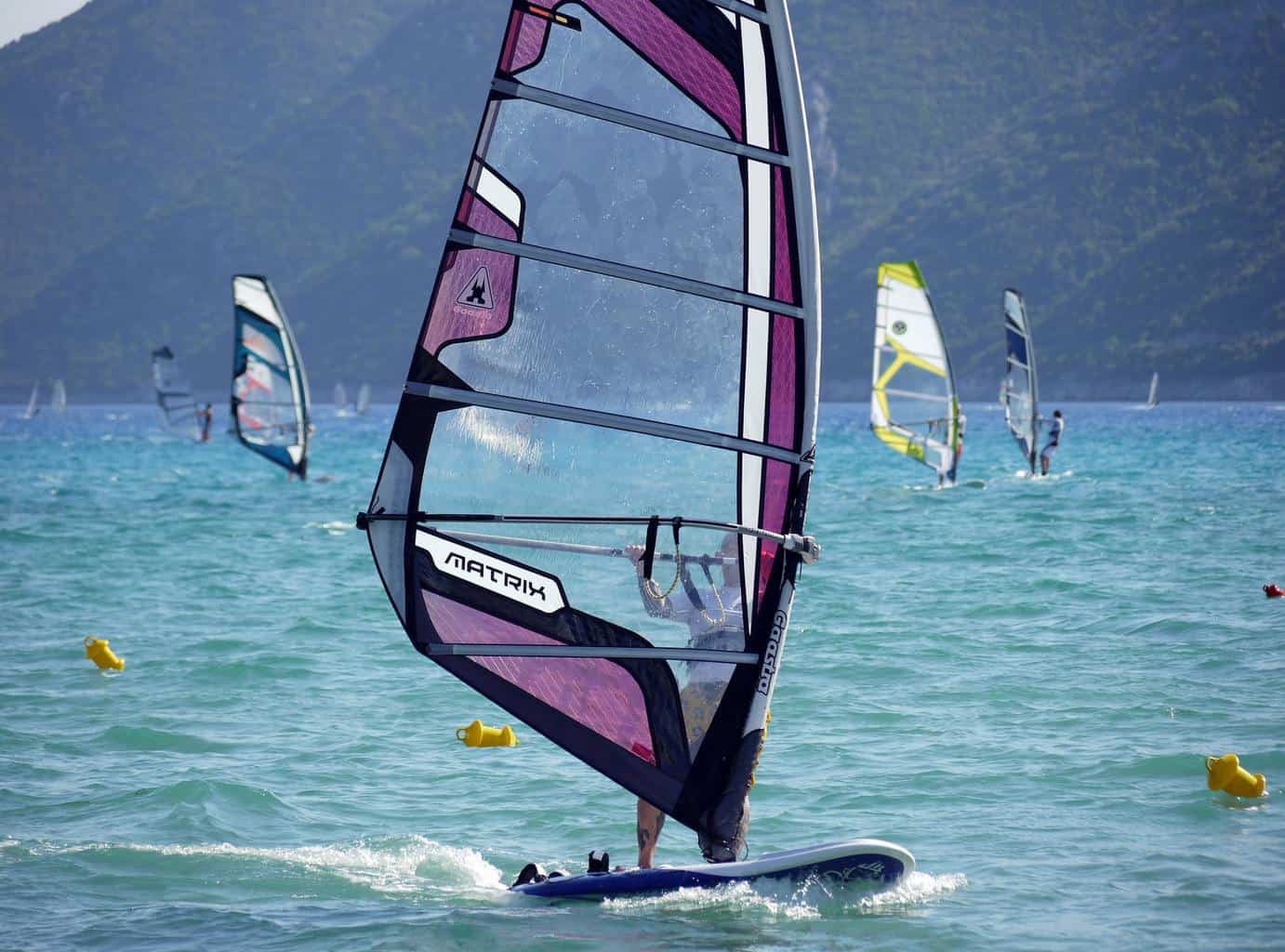
How to Choose the Right Windsurfing Sail Size (With Chart)
-

Windsurfing: How Much Downhaul Is Needed? (Essential Facts)
-

Is Windsurfing an Extreme Sport? (All You Need to Know)
-

Is Windsurfing Easier Than Kitesurfing? (An Honest Comparison)
-
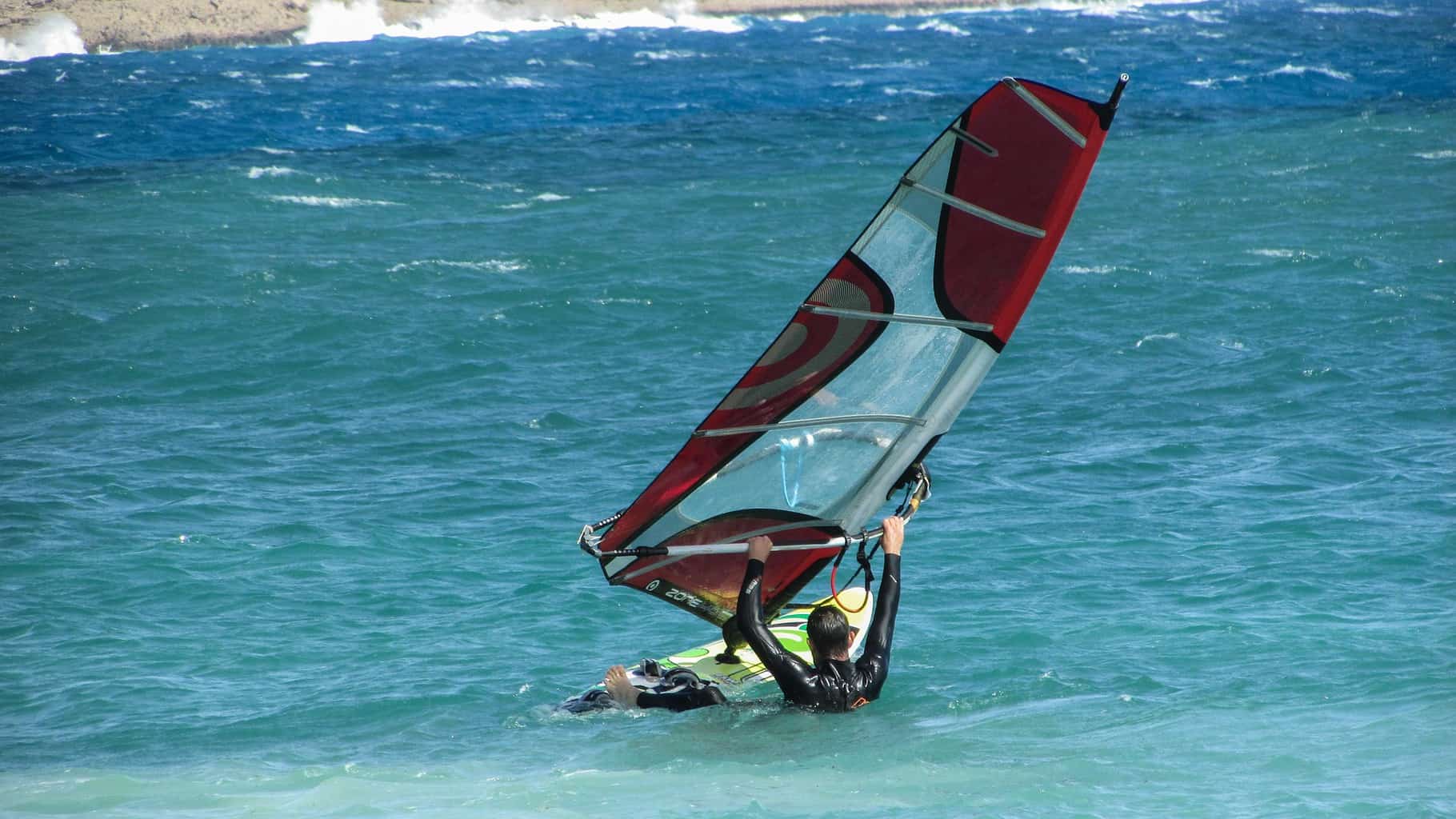
Is Windsurfing Harder Than Surfing? (Honest Comparison)
-
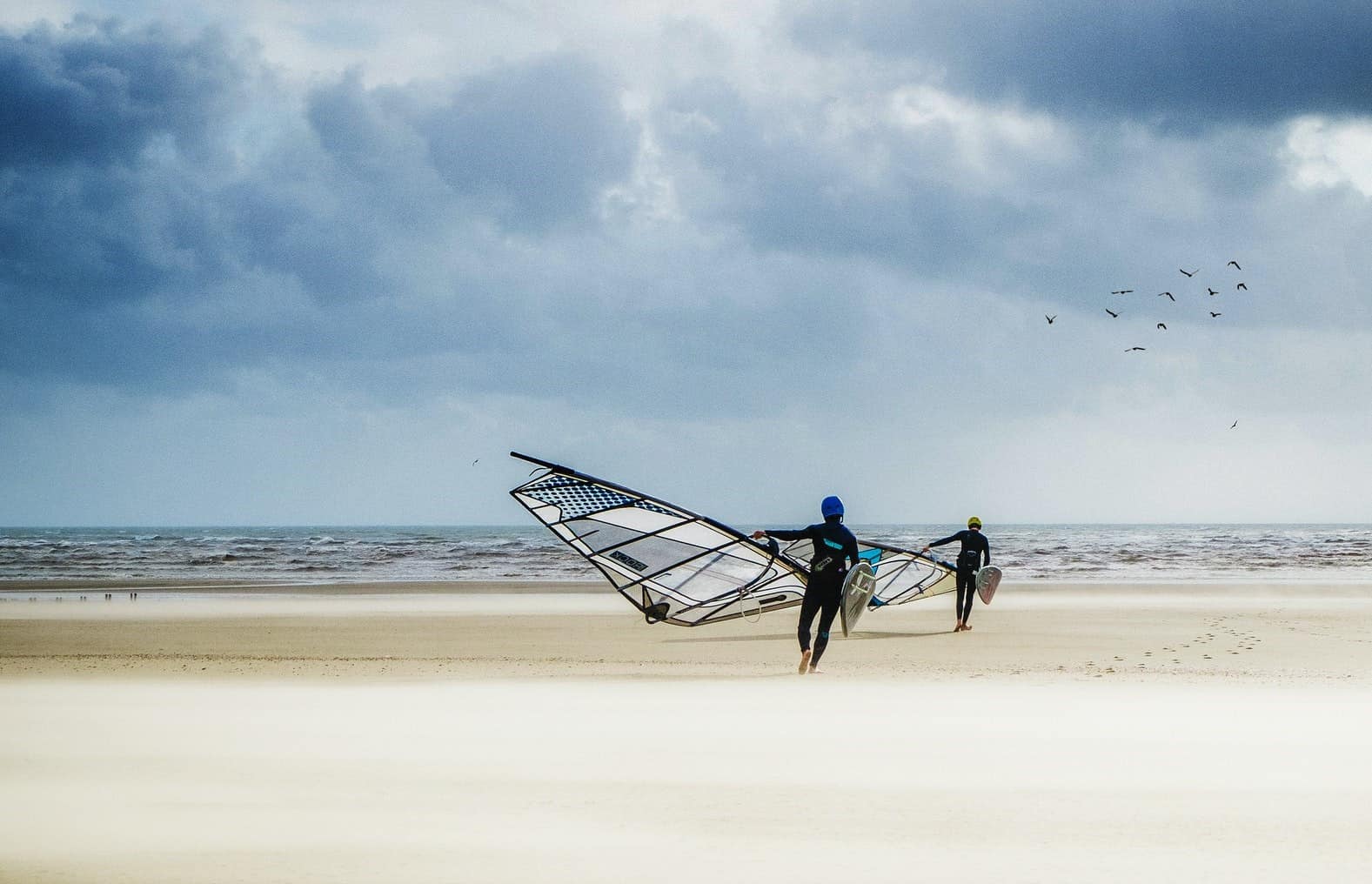
Is Windsurfing Still Popular? (An Insider’s Look at the Facts)










